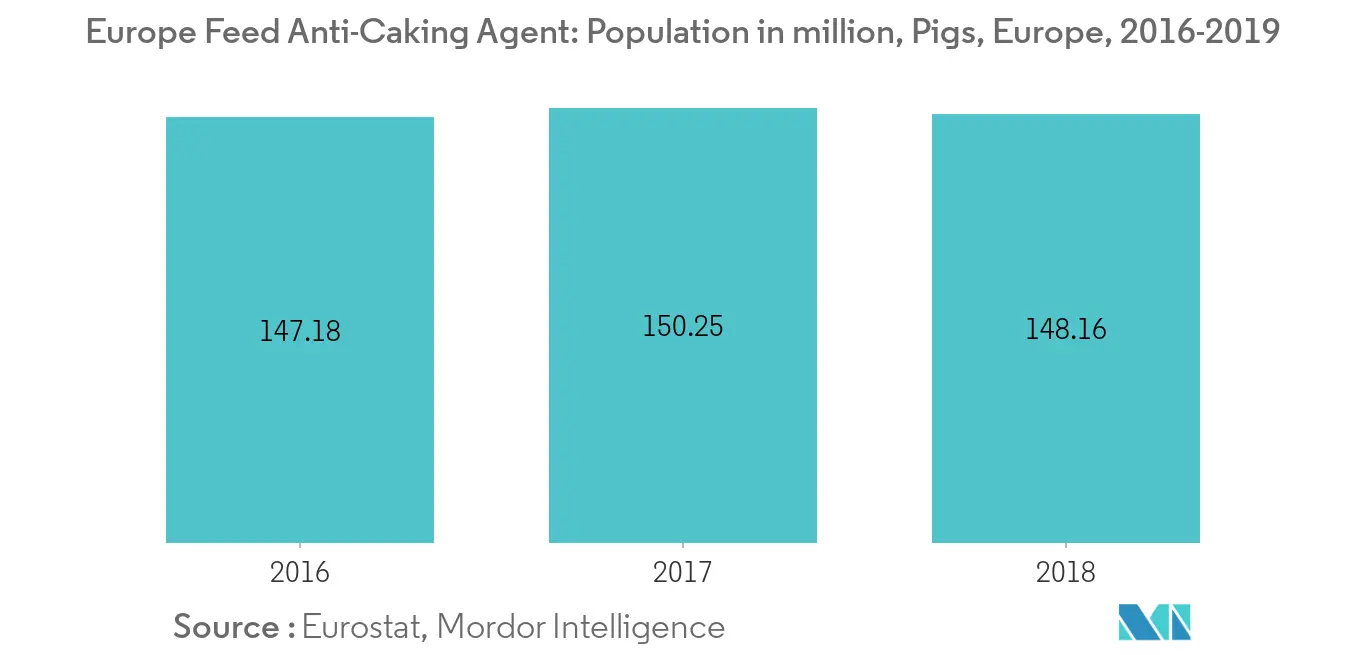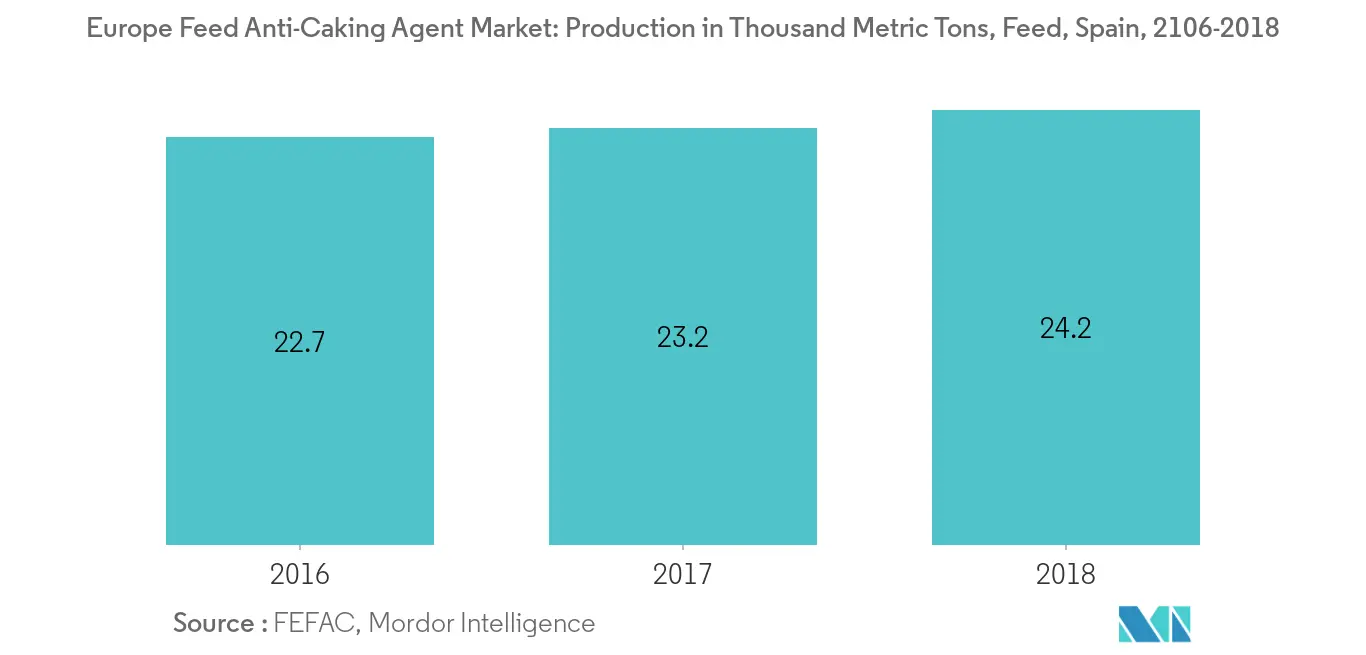Market Trends of Europe Feed Anti-Caking Agents Industry
This section covers the major market trends shaping the Europe Feed Anti-Caking Agents Market according to our research experts:
Need for Enhancing the Performance
With the rising health concern among the consumers, preference towards animal sourced products is on the rise. For instance, according to the Organisation for Economic Co-operation and Development (OECD), in 2016, per capita poultry meat consumption in Russia was 29.5 Kg that increased to 31.7 Kg in 2019. To meet the growing demand the producers are undertaking commercial meat production and feeding livestock with quality feed to increase the yield. As per Eurostat, in 2017 pig population was 150.25 million that decreased to 148.16 million in 2018 and cattle & buffalos' population was 121.22 million in 2017 that decreased to 119.79 million in 2018 as per FAO. With this declining trend need for increasing the yield has become important, which can be achieved by feeding the nutrient enriched feed. Thus, will create the demand for anti-caking agents in the region.

Increased Feed Production
The feed production in the region is growing significantly as the demand for animal-sourced products is on the rise. As the livestock industry registered a low growth rate, there is an increasing need for animal feed. This is expected to drive the demand for feed additives, particularly feed anti-caking agents. In order to meet the growing demand, it is necessary to ensure the feed of the livestock efficiently so as to increase the performance. Feed anti-caking agents are added to feed as they aid in keeping the feed-in power form preventing from lumps formation and ease the consumption and transportation. According to European Feed Manufacturers' Federation (FEFAC) in 2018, Spain ranked the highest feed production that amounted to 24,256 thousand metric tons followed by Germany and France with the production of 23,842 thousand metric tons and 20,845 thousand metric tons. The feed production in the region is increasing significantly owing to the growing livestock production as a result of higher meat preference for meat. This indicates the growth of the anti-caking market in Europe.


